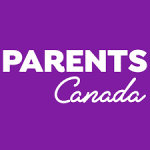Food
3 min Read
Tips for taming the ravenous eater

November 18, 2022
Food
3 min Read

November 18, 2022

It’s better for your child’s health that they don’t gobble down their food. Here are some tips to get them to slow down during meal time.
Speedy eaters tend to eat more before they realize they are full. Ask them to put their fork or spoon down between mouthfuls and only pick it up when everything has been chewed and they are ready for the next bite.
Place bulk-size snack foods like popcorn or pretzels in portion-size bags so younger kids know what an appropriate portion looks like. Use familiar objects like a baseball or two handfuls to help kids visualize portion size. Canada’s Food Guide explains what a healthy portion size looks like.
Eat in the same room, preferably the kitchen, and not in front of the TV or computer. Also, avoid making the car a mobile cafeteria.
Teach kids to recognize real hunger signs. When they say they’re hungry for a snack, help them recognize if the hunger pang came on slowly or suddenly. Emotional hunger comes on suddenly whereas true hunger creeps in slowly. Reaching for a snack makes them feel better when they are bored or upset. Replace this with something else that makes them feel good like telling jokes, browsing through photos of a happy time or playing a game.
Except for a juicy bowl of fruit on the counter, keep food and packaged snacks out
of sight – either hidden or in an out-of-reach cupboard. This will discourage mindless eating.
Read the nutrition labels with kids so they understand what they are eating and how to make better choices. Explain that the first ingredient listed is the highest in quantity, so if the list begins with sugar or a word you can’t pronounce, avoid it. A shorter ingredient list is usually the better choice.
Post Canada’s Food Guide in your kitchen. Explain the different food groups and compare kids’ daily intake on a given day with the recommendations in the Guide. Make this a weekly check up as part of your nutrition talk with the kids.
Nutrition labels also provide ‘serving size’ or ‘servings per container’ lines. The nutrition and calorie value is listed according to the serving size. Beware of marketing tricks like ‘only 100 calories’ on the packaging; that chocolate bar may say 100 calories but the nutrition label may say ‘two servings’ which means 200 calories.
Buy a book on nutrition and use it to teach kids about the benefits of certain food. Ask or give them nutrition facts: We know vitamin C keeps us healthy, but which fruit has the most vitamin C? Peanut butter can help our muscles relax because nuts give us magnesium. Compare the list of nutrients on the nutrition labels of your favourite foods to discover what vitamins and minerals they are high in. As kids grow older, this knowledge will matter more and more to them.
Limit less healthy snack foods or treats but don’t make them taboo – just make sure healthy snacks prevail.